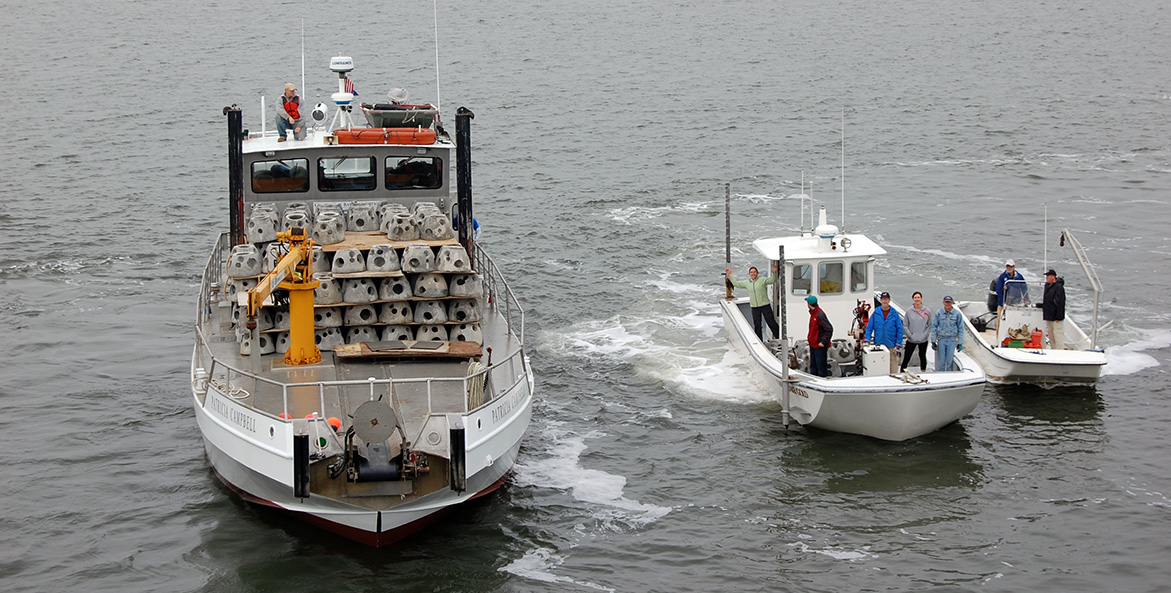The Chesapeake Bay Foundation recognizes that saving the Bay is uniquely tied to restoring the native oyster, Crassostrea virginica. Historically, Chesapeake oysters were the Bay's most valuable fishery. Ecologically, native oysters are equally important: they filter algae, sediment, and other pollutants. Oyster reefs also provide habitat for fish, crabs, and other Bay organisms. Restoring the Bay's native oyster population is critical to help improve the Bay's water quality, economic viability, resilience, and biodiversity. Success depends on everyone, regardless of background or identity. Clean water and a safe environment are rights we all share.
Oyster Restoration in Maryland
Oyster Restoration in Virginia
Oyster Gardening
Help rebuild the Chesapeake Bay's oyster population by becoming an oyster gardener. Hundreds of community members in Maryland and Virginia grow oysters alongside their docks and then help CBF plant them on sanctuary reefs. Find out more about oyster gardening and how you can become a gardener in Maryland, Baltimore, and Virginia.
Oyster Shell Recycling
Oyster shells are literally the foundation of our reef restoration efforts, but they are becoming increasingly scarce. Through CBF's Save Oyster Shell recycling program, individuals and restaurants donate empty shells to be used in a variety of oyster restoration projects.
We turn 4,000 bushels of recycled oyster shells each year into habitat for millions of oysters planted in the Bay and its rivers. Once the recycled shells are cleaned and cured, CBF places them in huge water tanks containing millions of microscopic oyster larvae, which then attach to the shells. On average, each recycled shell can become home to around 10 of those baby oysters, called spat. CBF provides the spat-on-shell to its oyster gardeners and plants them in rivers and the Bay to grow and expand oyster reefs.
For information on local shell recycling locations and participating restaurants, please visit our Save Oyster Shells web page.
Reef Ball Construction
Reef balls provide hard substrate for the settlement and growth of oysters. They emulate the structure of an undisturbed oyster reef that builds higher in the water column over time through generations of oyster spawning and growing. The reef balls also create instant habitat for fish, crabs, and other Bay organisms.
Sometimes CBF will set the reef balls with oyster larvae, just like we do with recycled oyster shells. CBF depends on volunteers to help us build and deploy reef balls all across the watershed.
Large-Scale Oyster Restoration Baywide
Recognizing the importance of oysters to a healthy Bay, the 2014 Chesapeake Bay Watershed Agreement includes an ambitious goal for the large-scale restoration and protection of native oyster populations in 10 rivers. CBF has been a partner in these efforts.
Oyster Restoration Sites
This map displays all of the Chesapeake Bay Foundation's oyster restoration sites. Double-click on the map or use your mouse scroll wheel to zoom into a location. Click on a blue dot to view additional information on that particular site.



